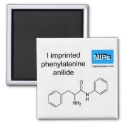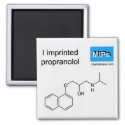|
|
Reference type: Journal
Authors: Araki K, Goto M, Furusaki S
Article Title: Enantioselective polymer prepared by surface imprinting technique using a bifunctional molecule.
Publication date: 2002
Journal: Analytica Chimica Acta
Volume: 469
Issue: (2)
Page numbers: 173-181.
DOI: 10.1016/S0003-2670(02)00664-5
Abstract: An enatioselective surface-imprinted polymer for an amino acid derivative (N-benzyloxycarbonyl-glutamic acid, Z-Glu) was prepared using the bifunctional molecule, benzyldimethyl-n- tetradecylammonium chloride (Zeph). The long-chain quaternary ammonium chloride was found to serve the dual function of an emulsifier and host molecule, while conventional functional molecules possess only the latter function. Chiral recognition ability and ligand specificity of the imprinted polymer were demonstrated by several batchwise tests using different four amino acid derivatives. The surface-imprinted polymer could recognize the chirality of N-protected glutamic acid; therefore, it preferentially adsorbed the corresponding enantiomer that was imprinted in the preparation. The pH and buffer concentration in the aqueous solution are the key factors enhancing enantioselectivity. The molecularly imprinted polymer could distinguish the specific structure from other molecular analogues, even though the structural difference was the only methylene group. The high interfacial activity of the functional molecule and the low swelling property of the imprinted polymer were important in ensuring high imprinting effect. The mechanism of chiral recognition on the polymer was also discussed. (C) 2002 Elsevier Science B.V. All rights reserved
|


 cross-link with me ball and stick shirt
cross-link with me ball and stick shirt







 I imprinted phenylalanine anilide magnet
I imprinted phenylalanine anilide magnet







 I imprinted propranolol magnet
I imprinted propranolol magnet






